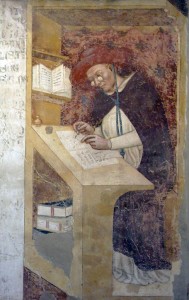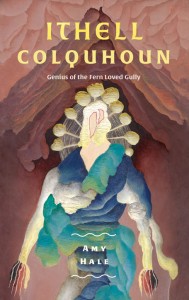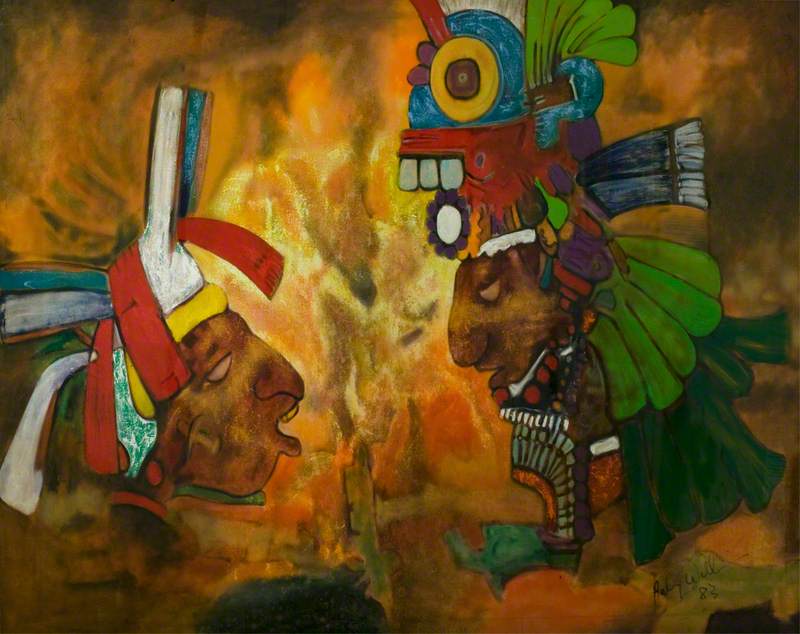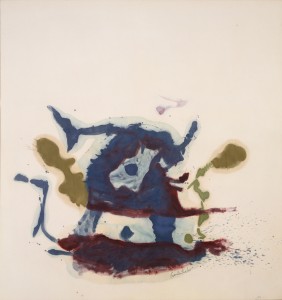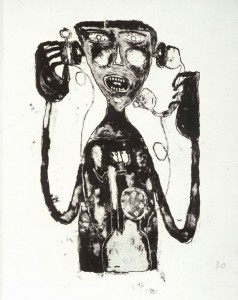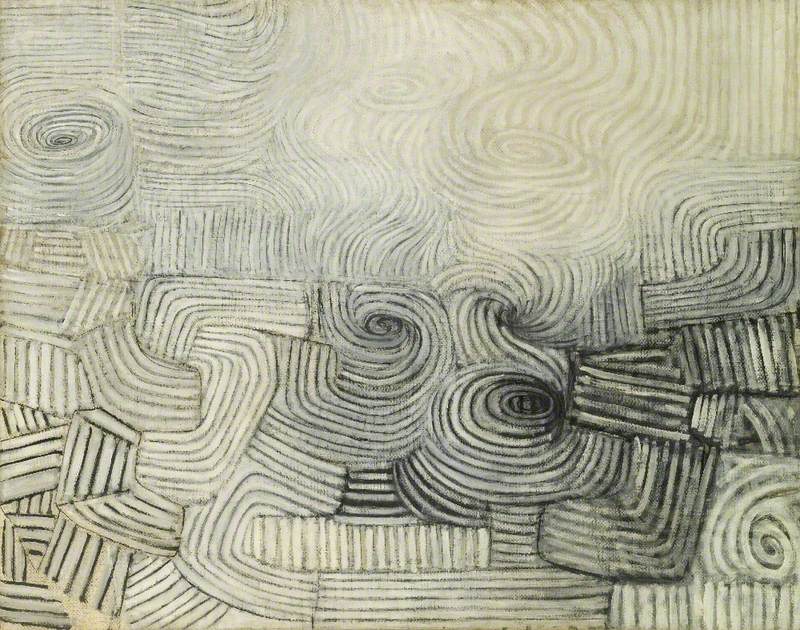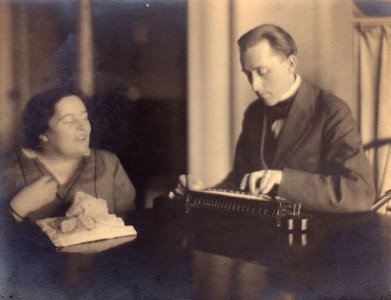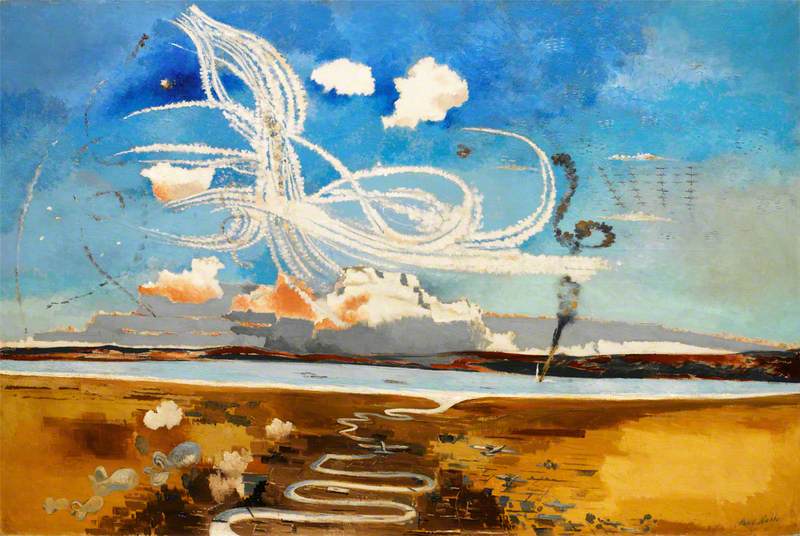The art of Paul Klee (1879–1940) makes people smile. Take Fish Magic (1925), a jewel-like painting of a mystical realm that's part earthly, part celestial, part aquatic. At the centre, a clock has struck nine. Little and large fish – some x-ray-like with bony details, others simple silhouettes – drift around it. Childlike flowers bloom, one bunch in a vase shaped like an hourglass. Blushing discs resemble planets. In the foreground, a cartoonish character with spaghetti arms and stumpy legs raises a fuchsia-pink hand in greeting and smiles back.
Fish Magic
1925, oil & watercolor on canvas on panel by Paul Klee (1879–1940) 
The works of the great Swiss-German modernist are whimsical and childlike, and at the same time full of inventiveness and wit. He liked 'taking a line for a walk' – and we like tagging along with him. At times that line extends into a series of stripes. Elsewhere it stretches taut into a tightrope. Klee tugs our gaze left and right with iridescent swatches of colour – a full moon, say, suspended between rooftops – and glimpses of an eye or an ear amid otherwise abstract shapes.
Object: Woman and Beast
1904, etching & aquatint on paper by Paul Klee (1879–1940) 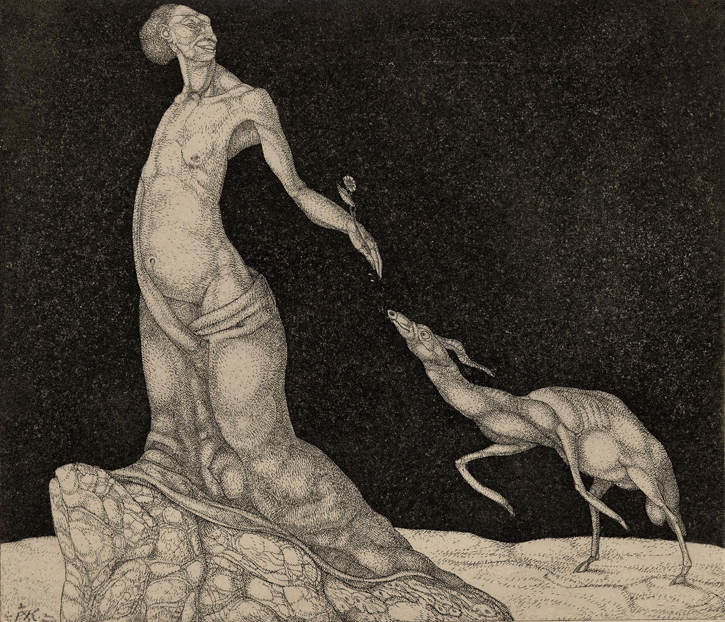
An artist with a knack for organisation, Klee created more than 10,000 paintings, watercolours, prints and drawings, each different from the next – and he catalogued the lot, allowing us to chart his progress.
Paul Klee
1922, photograph by Hugo Erfurth (1874–1948) 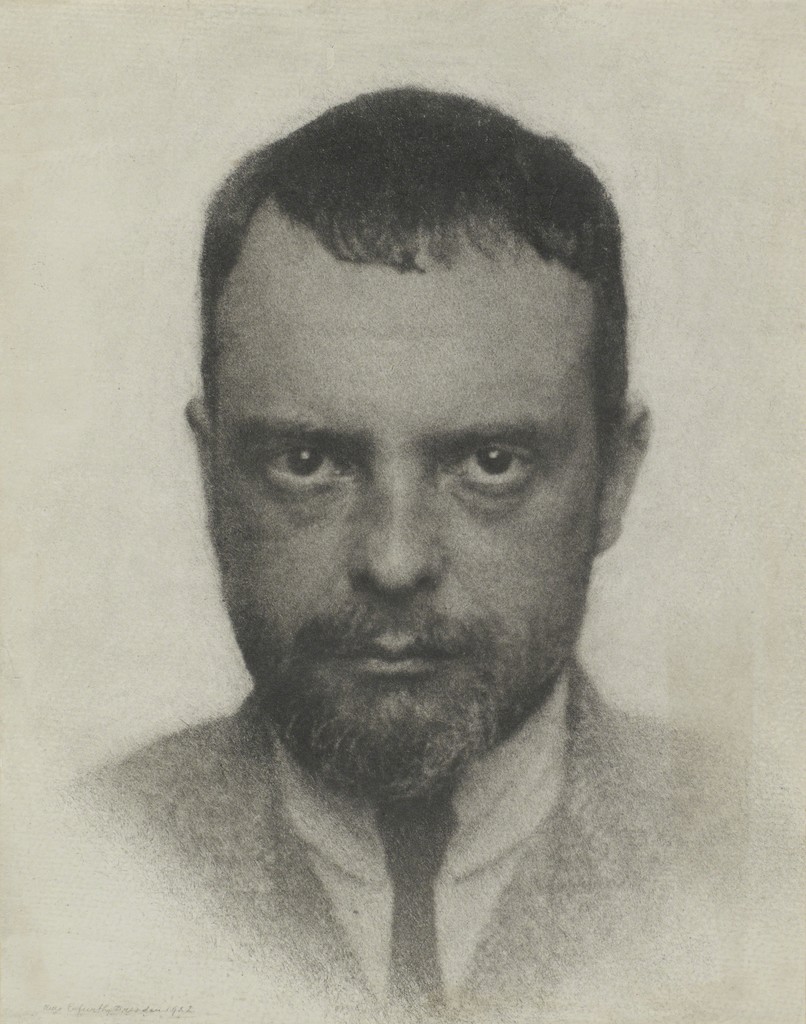
Klee was born in Switzerland in 1879, the second child of a singer and a music teacher. He married a pianist – Karoline Stumpf, known as Lily. He himself was an accomplished violinist and, in a sense, a composer: slipping between figuration and abstraction, his artworks are like pieces of music, each with its own rhythm and pitch.
He had a remarkable ability to make shapes and colours pulse and sing, as in Small Harbour Scene (1919), which glows blue, purple, yellow, green. Some works are choruses, crescendos in every shade, while others are quiet, petering out like the end of a track. Even in his most abstract works, there's a hint of reality – a blade of light, a building, piano keys.
He may have been organised, but he was also spontaneous and unpredictable: in the sketchy Hoffmanesque Scene (1921), ladders lead to nowhere, a heart is shot with arrows, an open-beaked cockerel perches atop a clock tower, and a slinky-like coil extends up and out of a figure's nostrils.
Hoffmaneske Szene (Hoffmanesque Scene)
1921, colour lithograph, printed in black, yellow & violet on stiff wove paper by Paul Klee (1879–1940) 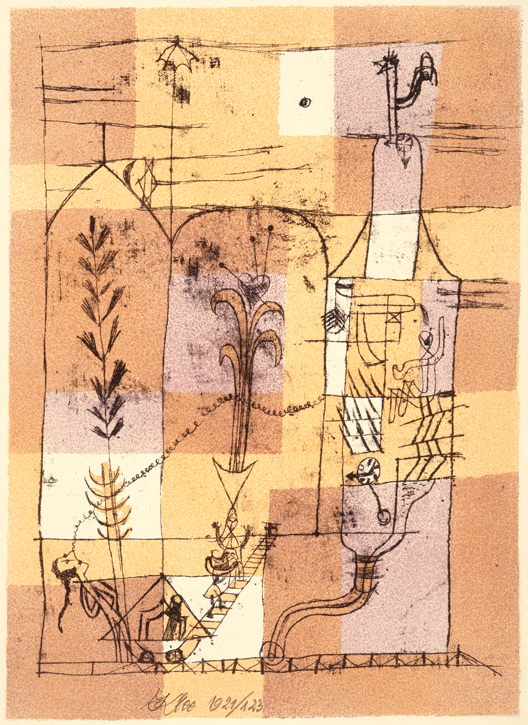
An often-recited anecdote describes a studio visit from the American collector Edward M. M. Warburg, who was alarmed when he saw Klee's tabby cat walking across a wet watercolour. Klee's response: 'Many years from now, one of your art connoisseurs will wonder how in the world I ever got that effect.'
Klee adapted multiple movements and mediums to suit his method. He studied in Munich, at the time the centre of contemporary art, where he mingled with Expressionists such as Wassily Kandinsky (with whom he became lifelong friends), Franz Marc and Gabriele Münter. A visit to Paris introduced him to the Cubist compositions of Pablo Picasso and Georges Braque, while trips to Tunisia and Egypt awakened his sense of colour.
With the Mauve Triangle
1914, watercolour on paper by Paul Klee (1879–1940) 
During his stay in Tunisia in 1914, he began to use colour independently, aligning himself more closely with abstraction. He understood that colours – like materials and shapes – could make their own mood. Inspired by the North African light, he embraced yellows, oranges and reds, which seeped into works such as With the Mauve Triangle (1914), a bright, flickering watercolour.
Klee continued to paint while serving behind the lines in the First World War, and in 1920 he had a solo show of more than 350 of his works at the Galerie Neue Kunst Hans Goltz in Munich that truly established his reputation. The following year he got a teaching post at the Bauhaus, the revolutionary modernist school of art and design, and took up modernist staples such as grids and all things flat.
Winter Day, Shortly before Noon
1922, oil on canvas by Paul Klee (1879–1940) 
While he was there he made Winter Day, Shortly before Noon (1922), a foreboding image of fiery forms looming over a small house, a river of red running from its front door, its chimney smoking. Fate and catastrophe were common themes in the aftermath of the war. The work was executed with the oil-transfer technique that Klee had invented a few years earlier. The process enabled him to transfer his drawings onto a painted ground, resulting in fantastically frayed lines, and to meet the growing demand for his work.
The puppet-like figure in Ghost of a Genius (1922), with rod-straight arms and legs, was created in the same way: Klee took a sharp instrument and drew an outline of his curious character on a piece of paper with oil paint on the underside.
Gespenst eines Genies, No. 10 (Ghost of a Genius)
1922
Paul Klee (1879–1940) 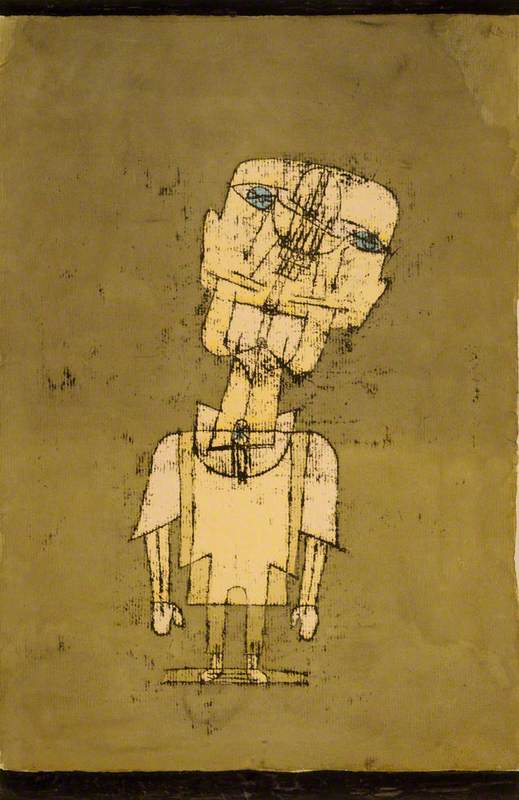
In 1931, Klee went to teach at the Düsseldorf Academy – and two years later, Hitler was appointed Chancellor. By April 1933, the new works by Klee, Max Beckmann, Ernst Ludwig Kirchner and others that had been thriving in Germany were deemed 'degenerate art' and removed from public collections. Klee was banned from exhibiting and teaching.
His art took a shadowy turn. The title of Walpurgis Night (1935) refers to the eve of the first of May, the feast day of Saint Walpurgis, and marks the season's change from winter to spring. In folk tradition, witches would come together in the Harz mountains to ward off evil, and in this gloomy work they emerge from the dark as cloaked figures, with owl-like faces and bark-like skin.
Three years later, in Forest Witches (1938), two heavily outlined figures are partially revealed against a dull green and vibrant red background.
Forest Witches
1938, oil on paper on burlap by Paul Klee (1879–1940) 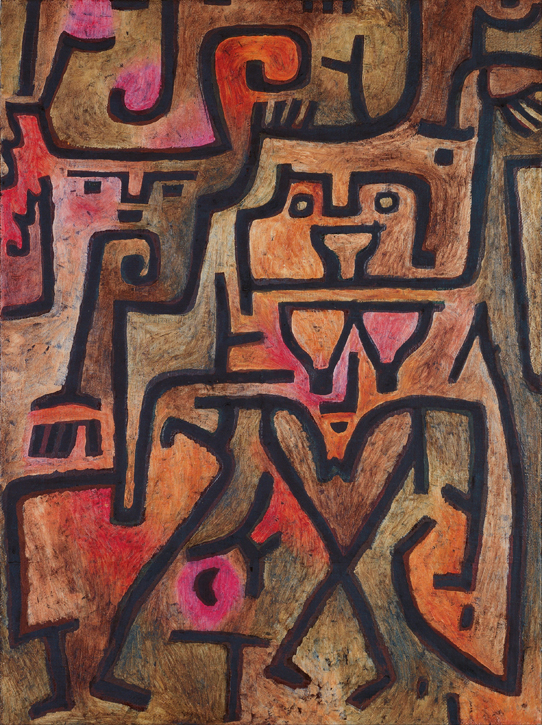
Klee and his family fled to Switzerland, where his health declined. In 1936 he was diagnosed with scleroderma, an incurable autoimmune disease that makes the skin thicken and can cause mobility problems. Though it affected his practice, he continued to work until he died in 1940 at the age of 60, by which point his paintings had grown larger, his lines harsher, his shapes extra dark. Voice from the Ether: And You Will Eat Your Fill! (1939) shows a wide-eyed German with spiked hair and saliva spilling from his mouth listening to his leaders' propagandist promises of wealth.
Stimme aus dem Äther: 'und du wirst dich satt essen'
1939
Paul Klee (1879–1940) 
Throughout his life, Klee was preoccupied with words, and titles played a big part in his work. They gave viewers clues about how to look or what to look for. To begin with, they were lively and playful – from Rose Garden (1920), a quilt-like image of reds and pinks, to the meditative Dance of Moth (1923) – but after his enforced return to Switzerland they became more bleak: take Still Life in Brown (1937) and, in his final year, Untitled (Captive/Figure of this World – Next World) (c.1940).
Untitled (Captive/Figure of This World – Next World)
c.1940, oil & coloured paste on primed burlap by Paul Klee (1879–1940) 
Klee was a key figure in the development of modernism and his work has inspired artists from Joan Miró to Mark Rothko and Bridget Riley. His art might seem simple, but it's masterfully composed. It's also mostly modest in scale and demands close viewing. So go on, take a step closer. Within the patchwork colours and wonky puzzles, you'll find dots, lines, faces, symbols, inscriptions – a dazzling wealth of invention.
Chloë Ashby, freelance writer and editor



